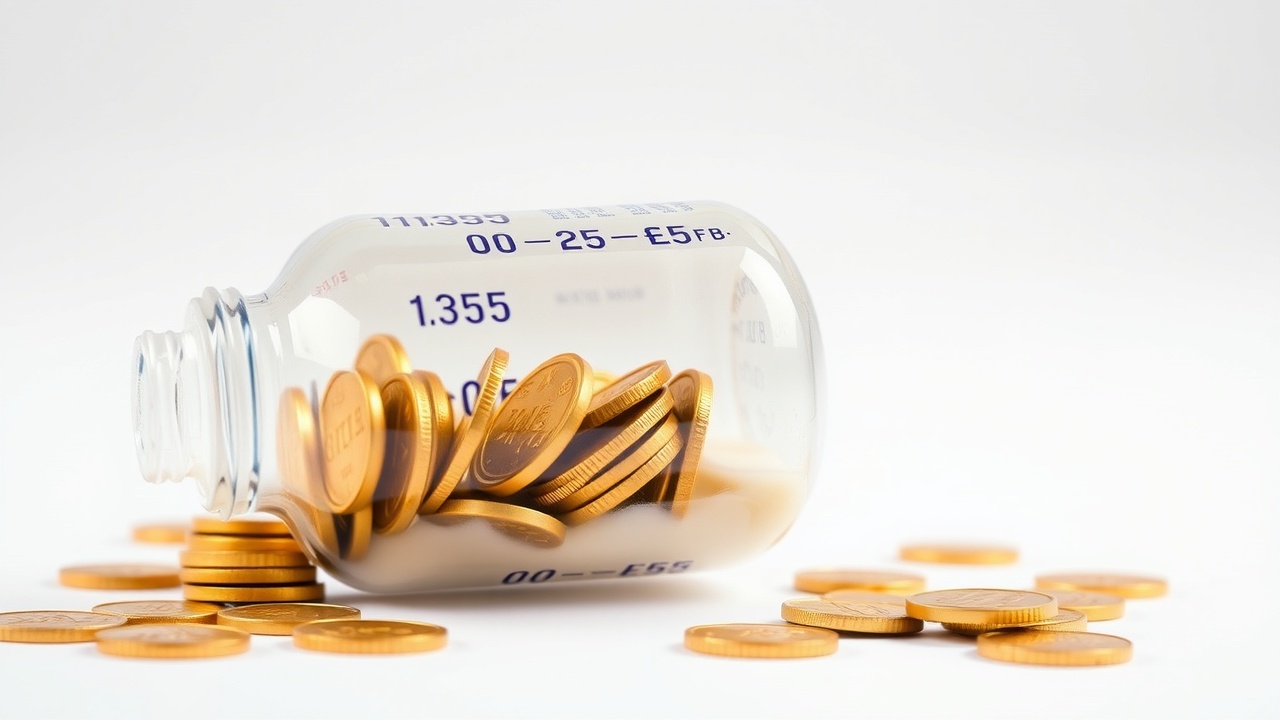
Debt funds now offer investors equity-like returns while lowering risk
Howard Marks is a US billionaire and titan in the bond and fixed income world. After establishing himself as a successful distressed bond trader at Citicorp in the 1970s and TCW Group in the 1980s, he established Oaktree Capital Management in 1995 with an emphasis on private equity, high-yield debt, and distressed debt. These days, Oaktree oversees roughly £200 billion in assets for its customers in private equity and distressed debt funds. Throughout the years, Marks, one of the greatest debt investors in history, has gained notoriety for his alleged investment "memos." These are sent to clients via email and shared online, and they include his opinions on a wide range of topics, including the economy, the markets, and even family life.
Marks has been in the business for 55 years and has seen many investment markets and cycles, such as booms, interest-rate cycles, inflation peaks, and crashes. Being one of the few fund managers who survived the rate-hiking and inflationary eras of the 1970s and 1980s, his memos have taken on a special poignancy in recent years.
Marks addressed the changing environment for bond and equity returns in a memo titled "Sea Change" in October 2023. He pointed out that the conventional benefit of stocks over bonds has been lessened by rising interest rates. The ICE BofA US High Yield Constrained index currently offers roughly the same annual return as the SandP 500, which has returned roughly 10% over the past century, he wrote. Put differently, the anticipated pre-tax yields from non-investment-grade debt investments are now on par with or higher than the returns from equity in the past. Indeed, that is a radical shift. Since 2023, investors can lock in high single- and double-digit returns on debt without incurring nearly as much risk as they would with stocks.
Equity is subordinated to debt.
Global debt markets are much bigger, more varied, and more important to the world economy than stocks, which frequently take center stage when talking about investments. Global debt hit a record high of over £324 trillion in the first quarter of 2025, according to the Institute of International Finance (IIF). This is roughly three times the total market capitalization of all global equity markets.
Sovereign and corporate bond debt, which is publicly tradeable similarly to equity (though there are some significant distinctions), makes up about one-third of this total. Direct lending and mortgage debt, also known as mortgage-backed securities, are two more forms of private debt. The majority of the 425 billion net increase in UK corporate debt since 2008, according to data from the Bank of England, has come from market-based financing, which includes funds from investment funds, insurers, private equity, hedge funds, and wealthy individuals. Syndicated loans account for the largest portion of funding. Syndicated loans are provided by a syndicate, which is a collection of lenders who pool their resources to support a borrower. It would be beyond the scope of this article to examine all the various forms of debt, their mechanisms, and the lending companies that specialize in them, but it is sufficient to say that there is a lender and a loan type for every circumstance.
Oaktree and Howard Marks have established a niche for themselves in the market for distressed debt. "Par" is the initial price at which a bond or loan is issued. Usually, this is a rounded figure, like 1,000 or 100,000. This is the price for both the issue and the redemption. An identical round number is used for bond issuance and repayment. After that, prices are quoted in pennies or cents, which provides a sense of how the market views the instrument. The market thinks a bond will be fully repaid, for instance, if it is trading at 97p on the 1st. However, it is a clear sign that the market doesn't think the bond will be fully repaid if its value drops to, say, £0.30 on the £1. In general, distressed bonds are those that are trading at a large discount to their issue price. The parties who own the bonds, including the company itself, may engage in transactions at any time. To buy a bond at £0.10 on the £1, for instance, Oaktree might enter the market. As a distressed-debt investor, it makes purchases with the expectation that it will be able to turn a profit in the event of bankruptcy or a robust business recovery.
A rough bond guide.
Compared to equity, bonds have a greater claim on a company's assets. Senior secured first-lien debt is typically the oldest type of debt. Secured second-lien loans, senior unsecured debt, senior subordinated debt, subordinated debt, and junior subordinated debt are the next most common types of debt. These senior debts will be paid off first in the worst-case situation, though there may be other debts below them. Senior secured debt has a higher capital structure and is backed by an asset, like a sizable warehouse, which can be used as collateral to settle the bond in the event that the business fails. A senior secured bond may be offered for pennies on the dollar by another debt holder, and Oaktree may then take the business to court to recover the asset and possibly earn a return that is several times its original investment.
That serves as a general guide to the seniority of capital structures and the trading value of bonds. An additional essential element of a bond or loan is the interest rate that investors receive. In many ways, a bond or loan's interest rate provides investors with more information about the debt's quality than its price. The quality of the debt, the amount of debt in the capital structure, the borrower's position, whether the debt is secured or not, the length of the debt, and the company's credit rating all play a role in determining the interest rate at which debt is priced.
Credit rating agencies like Standard & Poor's, Moody's, and Fitch Ratings are typically compensated to evaluate the risk of each credit instrument and provide a credit quality rating. Although each agency has a slightly different system, AAA is typically the highest rating, while C or D are the lowest. The price of bonds and the interest-rate differential will be impacted by the credit rating. The spread is the difference between the interest rate offered on the debt and a fixed benchmark, also known as the "risk-free rate." Examples of these include the base rate of the Bank of England or, more frequently, a US Treasury of the same duration (the number of years outstanding: a ten-year Treasury vs. a ten-year bond, for example). The perceived risk of the debt instrument increases with the spread.
When the bond is issued, interest rates are fixed; however, as the bond trades, prices and rates move in the opposite direction. The bond's issue price determines the interest rate, which will increase if the bond's price declines. A 100 bond with a 5% yield, for instance, will yield £5 in interest annually. Although the price won't change, it might drop to 80 (80p on the 1). Those who buy at the reduced price are doing so with a yield of 6.3 percent because the 5 annual interest rate stays the same. Even though the yield will decrease, the same thing occurs if the bond's price increases above par.
The interest rates themselves may be variable or fixed. A bond with a fixed interest rate, also known as a "fixed coupon rate," will pay out a fixed, predetermined interest payment (coupon) at regular intervals (such as semi-annually) for the duration of the bond's life, from issuance to maturity. An interest-rate bond that has variable coupon paymentsquarterly or semi-annually, for instancebased on a benchmark interest rate plus a predetermined spread is known as a floating interest-rate bond, or "floater." The Euro Interbank Offered Rate (EURIBOR) or the Secured Overnight Financing Rate (SOFR) are examples of common benchmarks.
Recognizing the main hazards.
This is the basic operation of bonds, loans, and other credit instruments. Investors only need to consider duration risk and credit risk when attempting to comprehend the risk involved with any given credit investment. Credit risk, sometimes referred to as default risk, is the possibility that the issuer will pay interest on time and repay the principal amount when it matures. It's the chance that the bond issuer won't fulfill its end of the bargain. A bond's price sensitivity to interest rate fluctuations is gauged by its duration risk. A bond's price will be more susceptible to changes in interest rates the longer it is in circulation.
Duration risk is best exemplified by Austria's 100-year bond, which was introduced during the height of the zero-interest rate era. The bond had a modified duration of 40% and was issued at par with a yield of 09%. This implies that the bond price changes by 40% for every 100 basis points that the yield rises or falls. The bond's value has dropped by almost 70% as interest rates have risen. Redeemation will still be at par for investors who can hold until the investment matures in 100 years, but anyone selling now will have to bear a 70% principal loss (the yield has increased to 20.6 percent). The least risky credit products are short-term bonds and those with variable interest rates. The duration risk of long-term fixed-rate products is the highest.
Even with the size of the credit and debt markets, individual investors typically cannot access these areas. The majority of brokers won't even bother handling trades smaller than several million pounds, and wholesale bonds, which are usually traded by institutional investors, frequently have minimum denominations of 100,000. Most esoteric debt instruments aren't publicly traded, despite offering the best opportunities and returns. Nevertheless, there are several investment trusts that focus exclusively on this field, and investors can currently construct a credit portfolio with a yield close to double digits and lower downside risk than an equity portfolio.
The investment trusts to purchase right away.
Investment trusts are an excellent way to hold a variety of debt, particularly when the market isn't liquid. Of the twenty-four listed debt and lending trusts, nine manage assets worth less than £100 million and lack the size necessary to effectively compete. The biggest are BioPharma Credit (LSE: BPCR), Sequoia Economic Infrastructure (LSE: SEQI), and GCP Infrastructure Investments (LSE: GCP).
Lending for infrastructure projects is the area of expertise for both Sequoia and GCP. With a weighted average maturity of 3 to 5 years and an average investment of £23.7 million, Sequoia is the larger of the two. Of the debt, 41% has floating interest rates and just under two-thirds is senior and secured by an asset. Due to the portfolio's floating-rate structure and the assets' comparatively short duration, duration risk is minimal. When opportunities present themselves, it actively trades assets. For instance, it just paid £8.0 million for the bonds of Navigator Holdings, a market-leading owner and operator of liquefied gas carriers with 56 vessels, at a 7:25 percent stake in 10/2029 bonds. Although that is a small holding for the portfolio, it is an alluring debt play that the typical investor cannot afford.
Sequoia's portfolio is significantly shorter than GCP's, with GCP investments typically lasting 11 years. Sequoia has been able to capitalize on the shifting interest-rate landscape by recycling its assets into higher-yielding ventures due to the portfolio's shorter lifespans. On a purely net-asset-value basis, Sequoia does provide the higher yield. According to Sequoias' net asset value (NAV), which was just under 92p per share at the end of May, the shares are currently trading at a 14 percent discount. The yield is slightly less than 9%. GCP is currently trading at 74p, a discount of almost 30%, compared to its last reported NAV of around 102p. This illustrates how long-lasting the assets are. With a 7p target dividend per year, the stock yields approximately 92.5 percent.
Pharmakon Advisors, LP, a specialized £10 billion biotechnology investor that has operated since 2009, oversees BioPharma Credit. BioPharma provides loans to small and mid-sized businesses in the life sciences industry. This is a specialized but profitable market if you get it right, as Pedro Gonzalez de Cosio, co-founder and CEO of Pharmakon Advisors, stated earlier this year. These companies have "a monopoly in treating a certain disease in a certain way, but most of these companies are at a stage where they probably still invest more in launching the product"that is, they have assets worth a lot of money, but they are still losing money.
Only three senior loans (to three different companies) accounted for slightly more than 60% of the portfolio at the end of January. But as Pedro pointed out, the portfolio shouldn't be seen in a vacuum. Since there is no other way to obtain these assets, I can assure you that investing in us will diversify your portfolio. 76% of the portfolio is floating rate, meaning that it must be paid back in two years at interest rates ranging from 8% to 12%. Additionally, if the bonds are paid back earlier than expected, companies usually agree to make additional payments. The trust was able to pay out about 50% more in special dividends as a result of that than was initially anticipated during its IPO. The trust offered an 11 percent dividend yield at the end of May and was trading at a 12 percent discount to net asset value.
TwentyFour Asset Management, a boutique manager for the Vontobel Group, based in Switzerland, is in charge of two debt trusts. Approximately 850 million of the 181 billion managed by the Swiss group is made up of Twenty Four Income (LSE: TFIF) and 250 million of TwentyFour Select Monthly Income (LSE: SMIF). Because it currently trades at a premium and has been issuing new stock to capitalize on the high demand for the shares, the larger trust is unique among UK investment trusts. Residential mortgage-backed securities (RMBS) make up 42% of the portfolio, with the remaining portion consisting of a variety of other securities, including commercial mortgage-backed securities (CMBS) and student loans. The senior and secured loans that are usually held by other trusts offer less yield than these assets, which are a little higher up the risk curve. The portfolio's average yield was almost 12 percent at the end of May. Due to higher interest rates as its portfolio has rolled over, the company has paid out a dividend yield of 11p per share over the last year, which is approximately 10% of the current share price.
Within the private-equity conglomerate CVC Group is CVC Income & Growth (LSE: CVCG). The CVC Group purchases high-yielding sub-investmentgrade loans in the direct lending market and manages 200 billion in assets overall. This market may be seen as a little riskier than other loan and debt markets, similar to TwentyFour, but CVC is extremely cautious about where it invests its investors' funds. We attach at a loan-to-value ratio of 50%.
Assistant portfolio manager Mitchell Glynn stated, "We are a secured investor," adding that "80 percent is secured." Consequently, "if something goes wrong, there is protection because there is a large equity cushion beneath us." The fund may charge borrowers 1213 percent or higher because CVC frequently lends money to businesses that have been excluded from other markets. Returns are increased if it can purchase debt on the open market at a reduced price.
Currently, this is occurring frequently as highly leveraged companies struggle in the higher-rate environment. Although there are "many opportunities," Glynn asserts that there are also "many toxic opportunities." In order to capitalize on the higher demand for its shares, the fund has been raising capital and is currently trading at a premium. Although special dividends are probably going to be added to this, the company is aiming for 9p25p per share in dividends over the next year, which would yield a dividend yield of 7p8 percent. But over the last five years, CVC's debt-trading strategy has enabled it to produce both income and capital growth, so this isn't just an income play. Over the previous five years, the trust has produced an annualized total return of 16 percent. The sterling shares saw a total return of 29 percent last year, and in 2023, 18 percent.














Leave a comment on: When it comes to investing, debt funds are finally getting their due